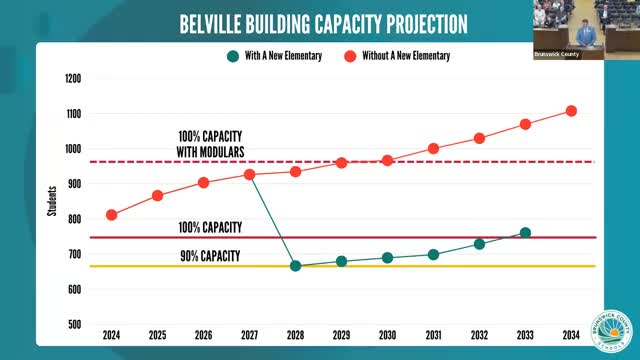Local commission warns Brunswick County lacks enough mental-health providers and treatment access
October 21, 2025 | Brunswick County, North Carolina
This article was created by AI summarizing key points discussed. AI makes mistakes, so for full details and context, please refer to the video of the full meeting. Please report any errors so we can fix them. Report an error »

A county advisory commission on Oct. 20 told the Brunswick County Board of Commissioners that the county has fewer psychiatrists and community mental-health providers per capita than state and national averages, and that substance-use treatment capacity and post-treatment housing are key areas needing investment.
David Howard introduced a presentation by the county’s Substance Use, Addiction and Mental Health Commission. Jeremy Seaman outlined clinical stages of treatment and recovery, stressing that “treatment is a first step. Recovery is the whole journey.” He described assessment and treatment phases — from detox and residential care through outpatient and peer-support services — and emphasized ongoing recovery management.
Cecilia (Celia) Pierce, representing Trillium Health (the local managed-care organization), summarized levels of care, from early-intervention services to intensive outpatient and inpatient treatment, and noted county service availability: four providers offering intensive outpatient, three providing comprehensive outpatient, four providing medication-assisted treatment and two opioid-treatment programs. Pierce said the county currently lacks an in-county detox facility; a stabilization and reentry center in nearby New Hanover County is scheduled to open early next year and will provide detox and mental-health crisis stabilization nearby.
Jeremy Seaman presented county statistics showing Brunswick County’s ratio of mental-health providers per 100,000 residents (about 161 per 100,000) is roughly half the North Carolina average (about 323 per 100,000), while addiction-treatment providers are closer to the state average. Seaman said the county also experiences higher suicide rates than the state average and urged more prevention and workforce development.
Kate Gomes, commission vice chair, recommended priorities including workforce development, investment in proven local programs, prevention and education (including school outreach), and more residential options for people completing treatment who then face local housing barriers that can block long-term recovery.
Commissioners and attendees praised local nonprofits and treatment courts, noted progress such as the wider distribution of naloxone (Narcan), and urged coordination on workforce incentives and on finding residential solutions for people in recovery.
Ending: The commission will continue quarterly briefings to the board and recommended steps including workforce recruitment strategies, increased prevention education and consideration of local residential supports to improve recovery outcomes.
David Howard introduced a presentation by the county’s Substance Use, Addiction and Mental Health Commission. Jeremy Seaman outlined clinical stages of treatment and recovery, stressing that “treatment is a first step. Recovery is the whole journey.” He described assessment and treatment phases — from detox and residential care through outpatient and peer-support services — and emphasized ongoing recovery management.
Cecilia (Celia) Pierce, representing Trillium Health (the local managed-care organization), summarized levels of care, from early-intervention services to intensive outpatient and inpatient treatment, and noted county service availability: four providers offering intensive outpatient, three providing comprehensive outpatient, four providing medication-assisted treatment and two opioid-treatment programs. Pierce said the county currently lacks an in-county detox facility; a stabilization and reentry center in nearby New Hanover County is scheduled to open early next year and will provide detox and mental-health crisis stabilization nearby.
Jeremy Seaman presented county statistics showing Brunswick County’s ratio of mental-health providers per 100,000 residents (about 161 per 100,000) is roughly half the North Carolina average (about 323 per 100,000), while addiction-treatment providers are closer to the state average. Seaman said the county also experiences higher suicide rates than the state average and urged more prevention and workforce development.
Kate Gomes, commission vice chair, recommended priorities including workforce development, investment in proven local programs, prevention and education (including school outreach), and more residential options for people completing treatment who then face local housing barriers that can block long-term recovery.
Commissioners and attendees praised local nonprofits and treatment courts, noted progress such as the wider distribution of naloxone (Narcan), and urged coordination on workforce incentives and on finding residential solutions for people in recovery.
Ending: The commission will continue quarterly briefings to the board and recommended steps including workforce recruitment strategies, increased prevention education and consideration of local residential supports to improve recovery outcomes.
View full meeting
This article is based on a recent meeting—watch the full video and explore the complete transcript for deeper insights into the discussion.
View full meeting
